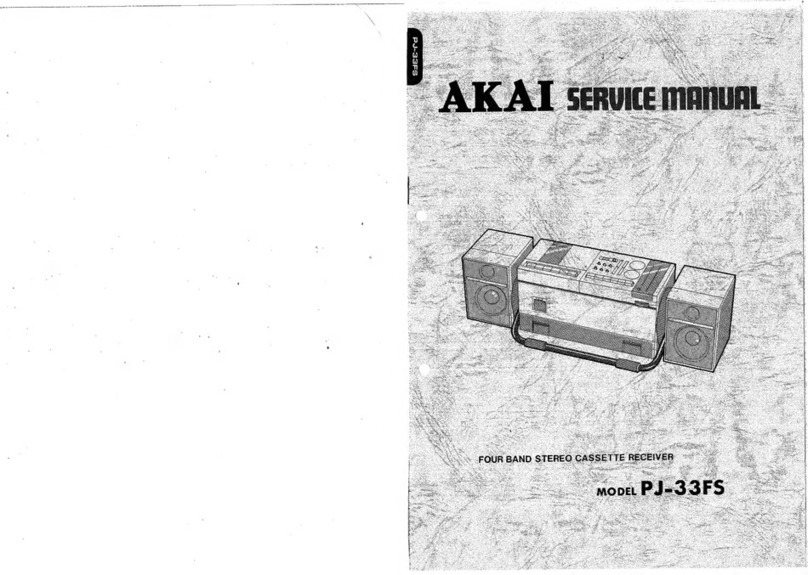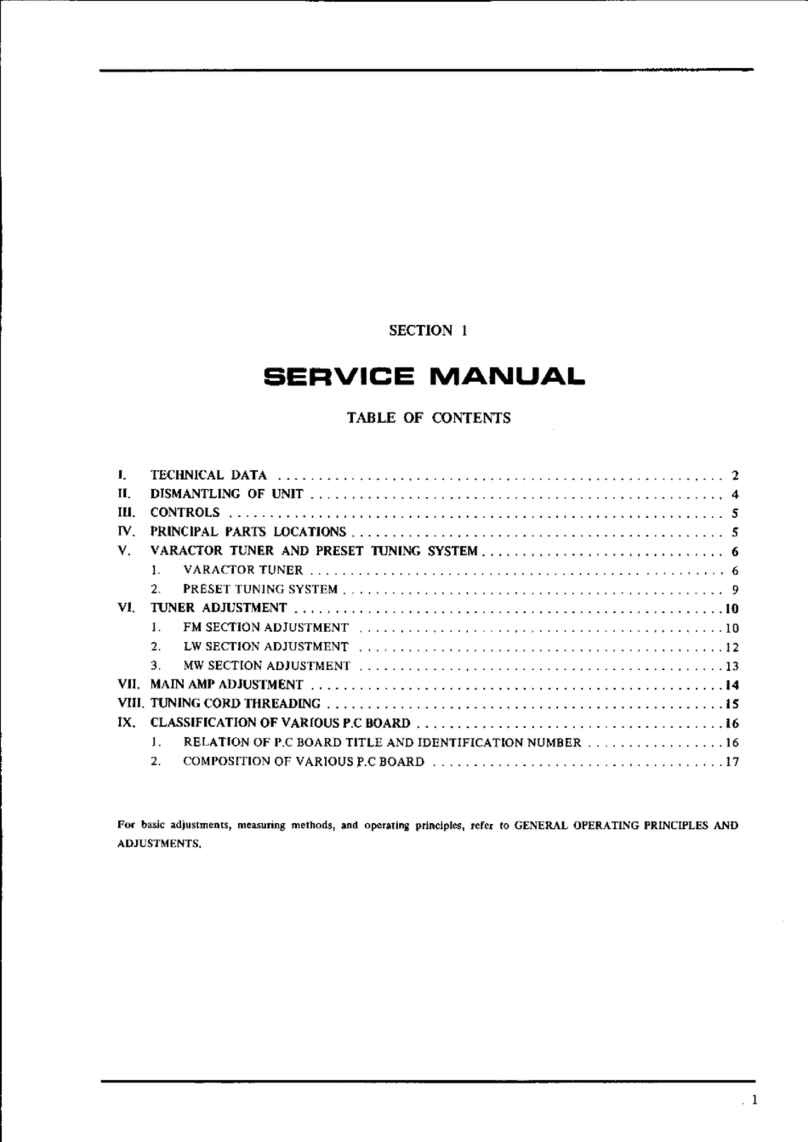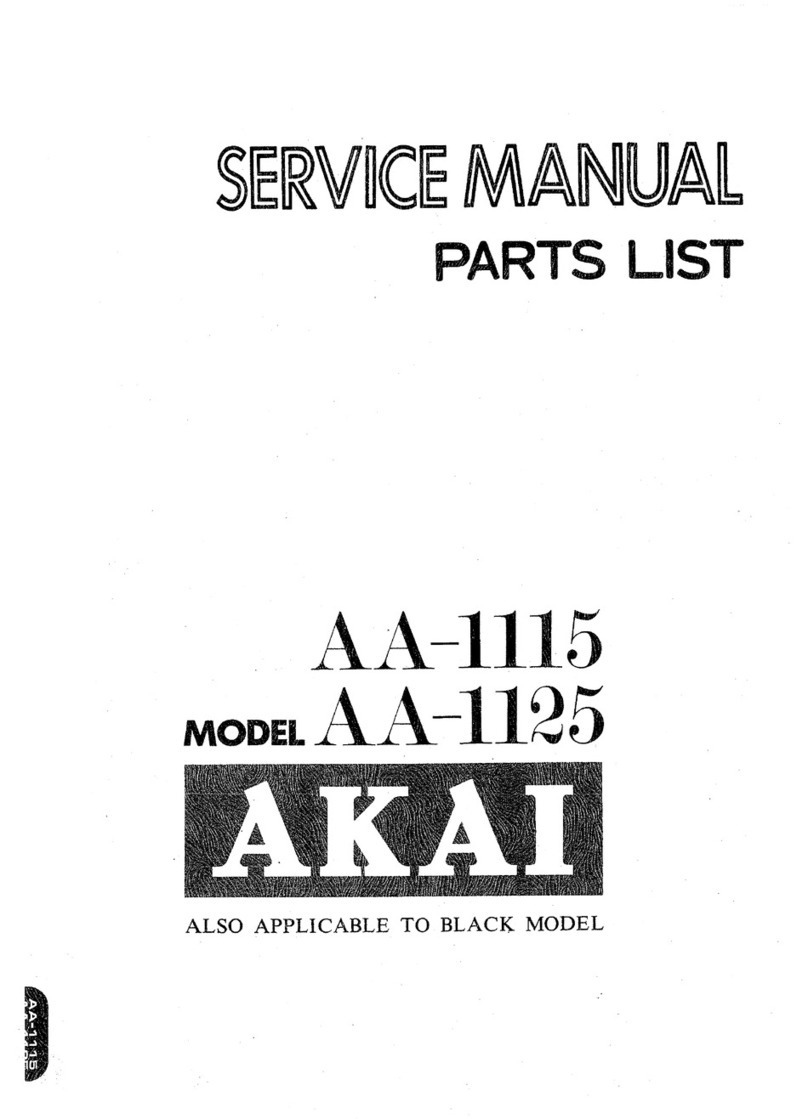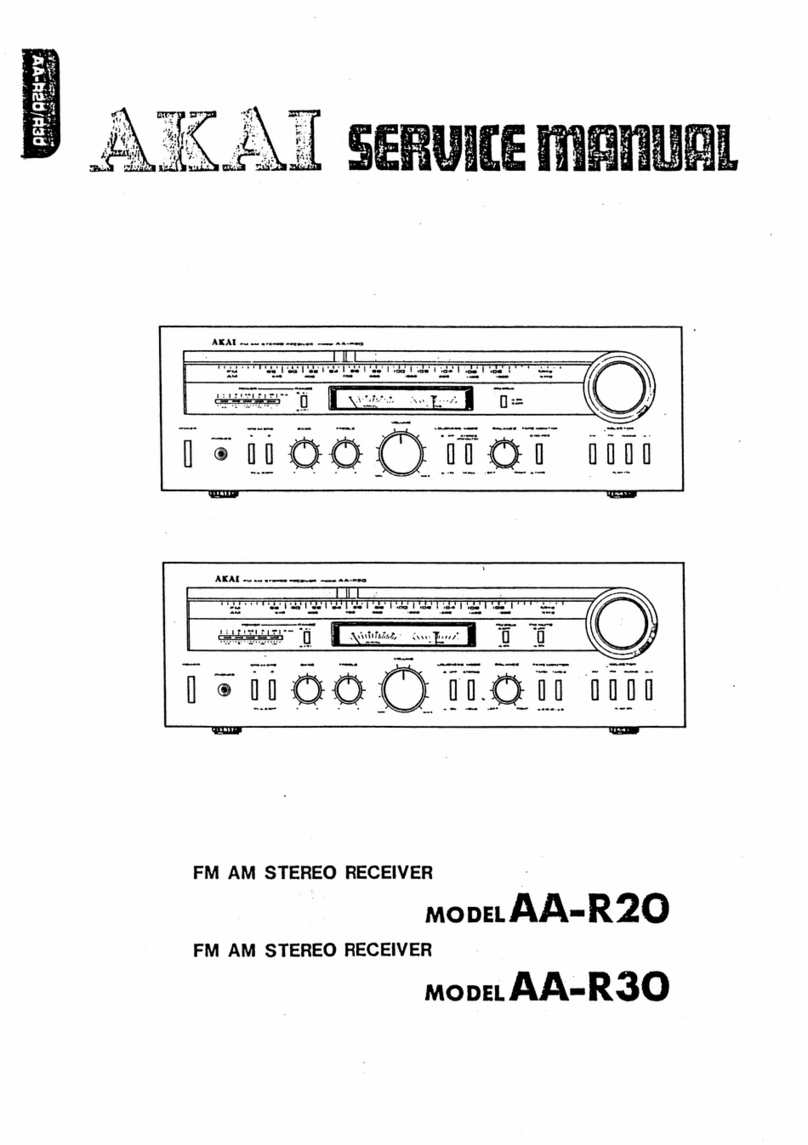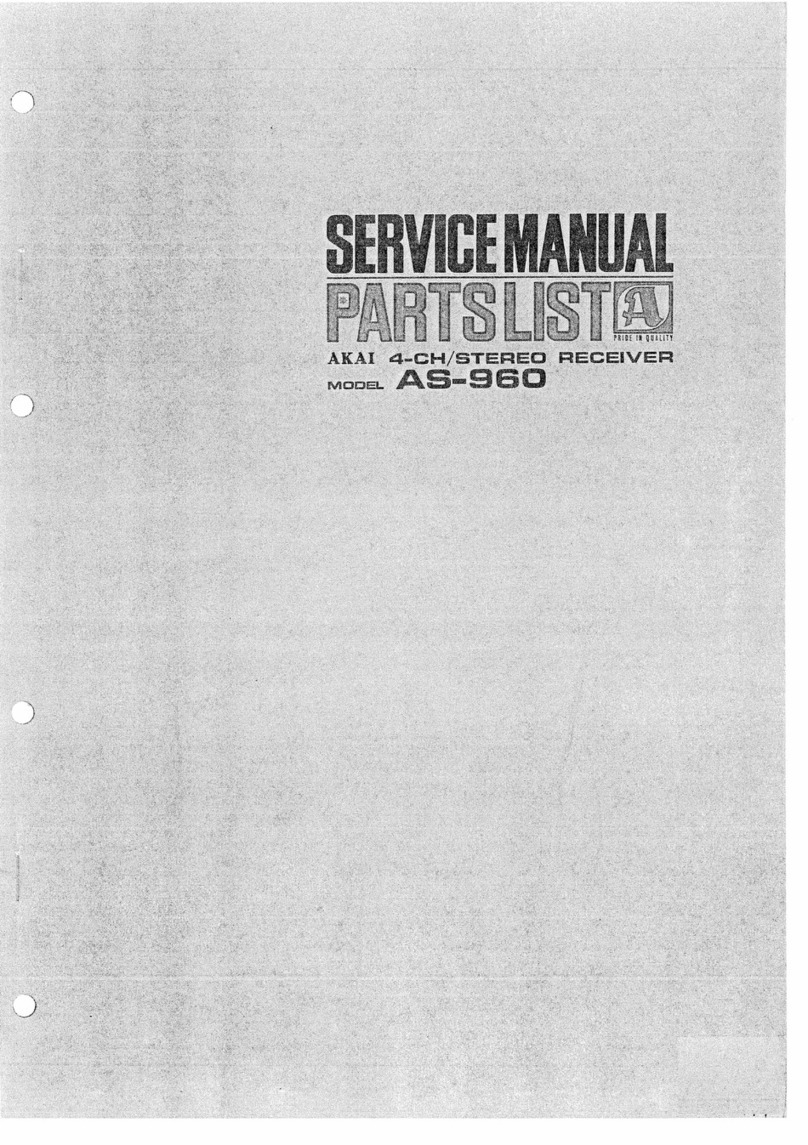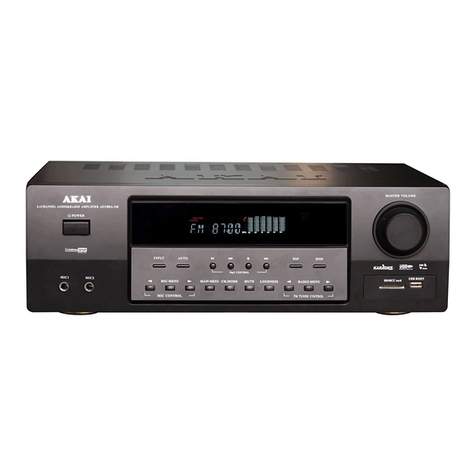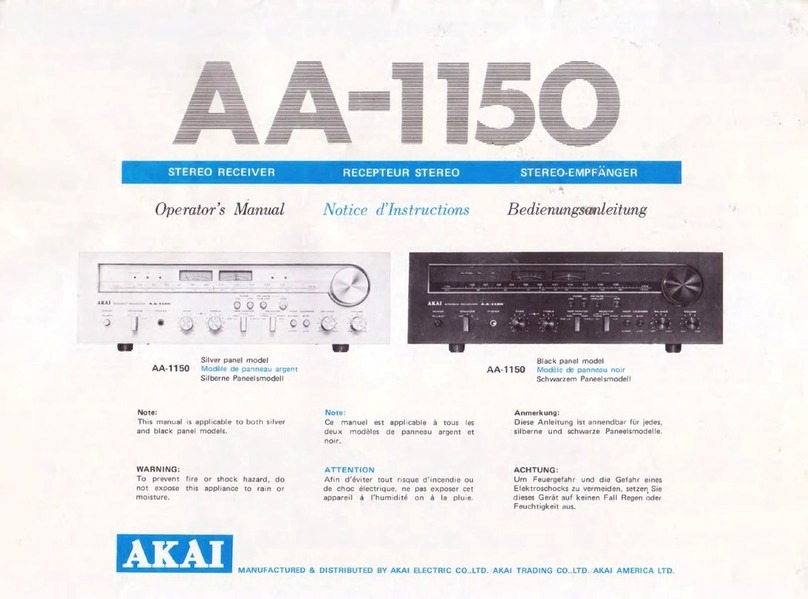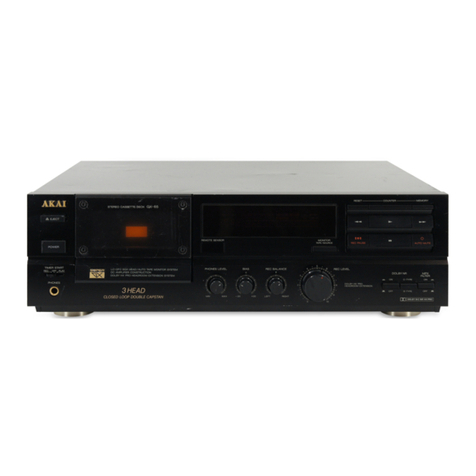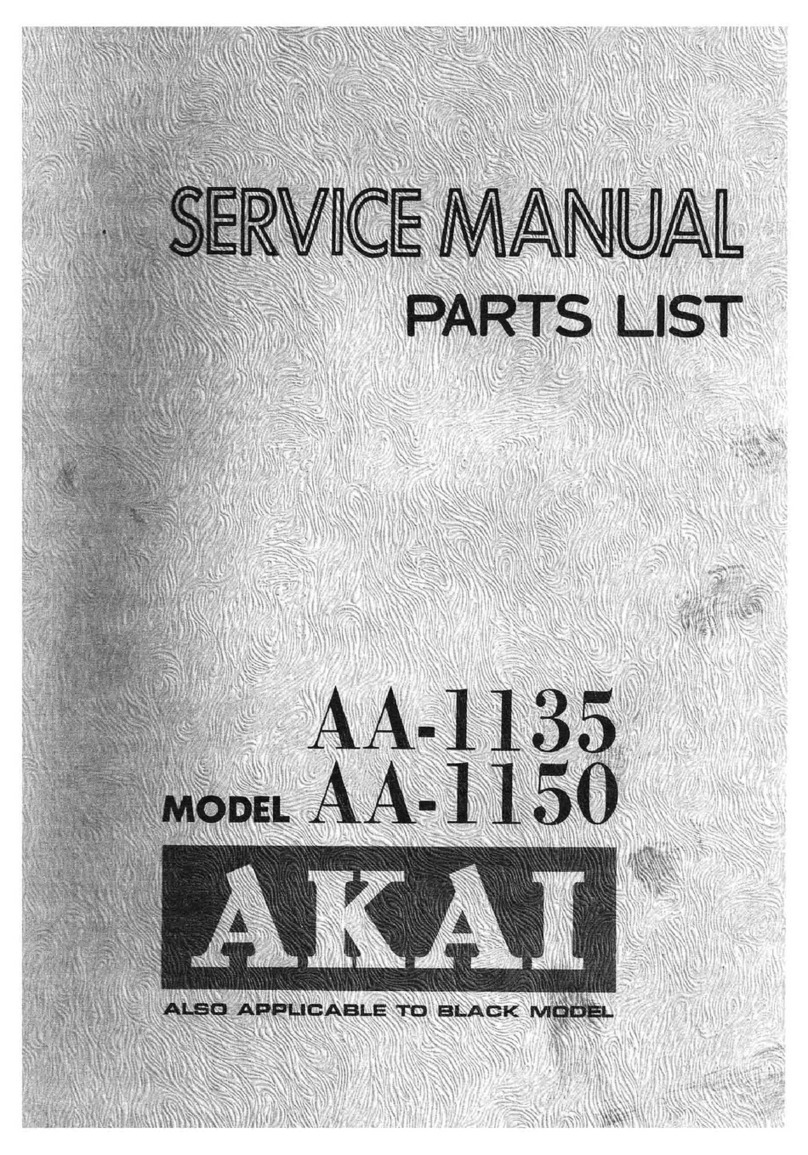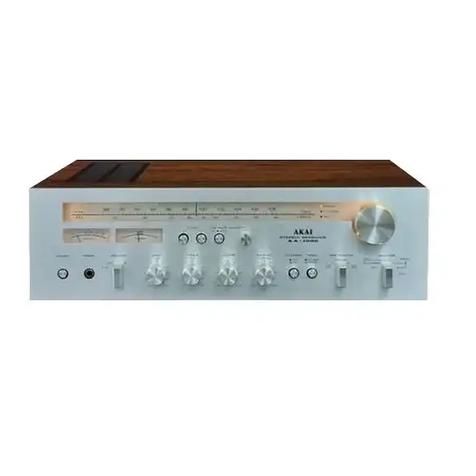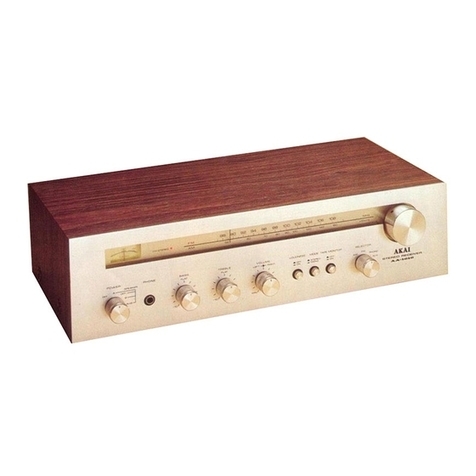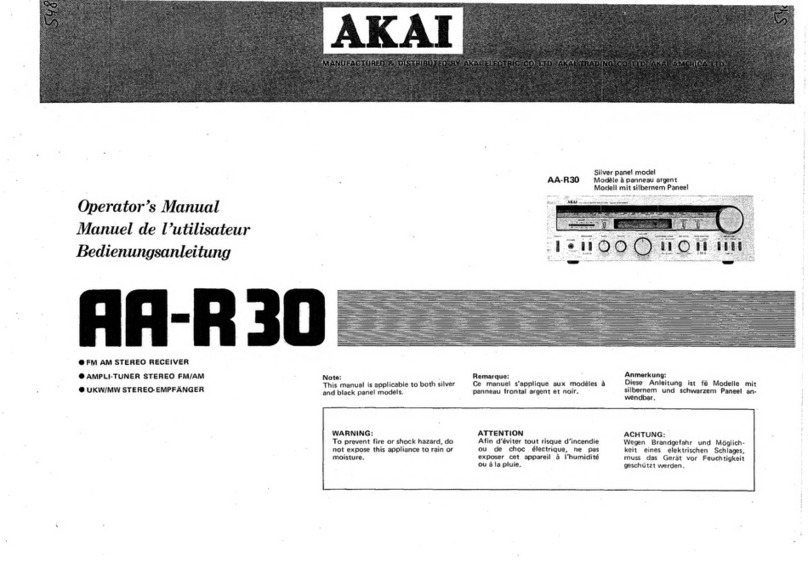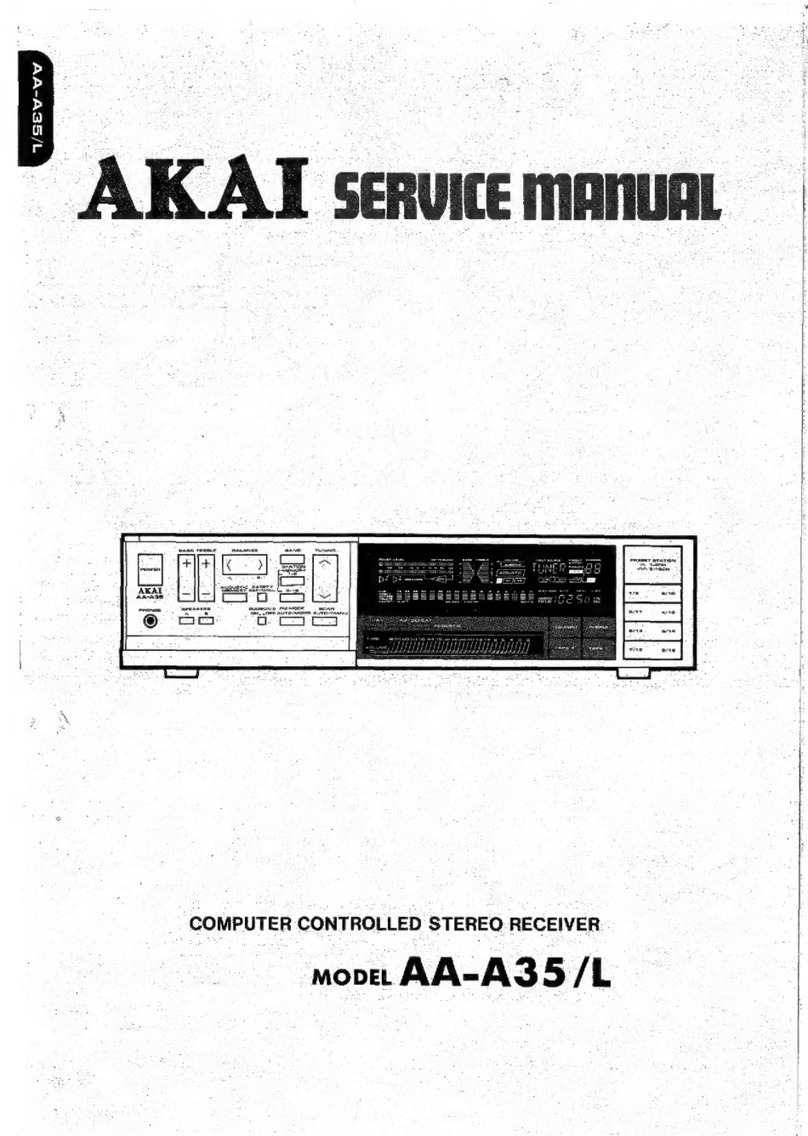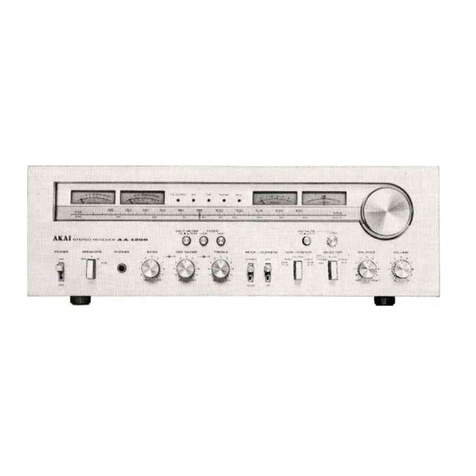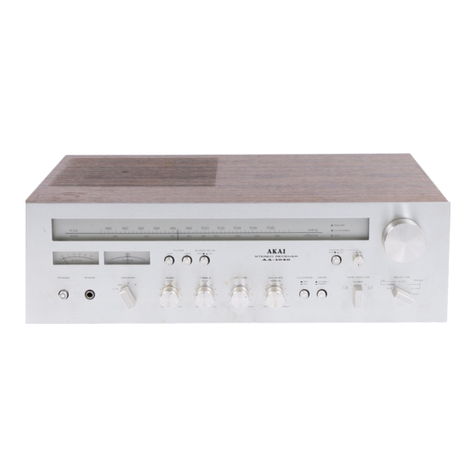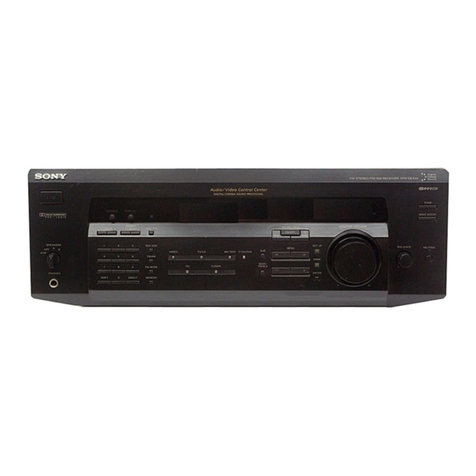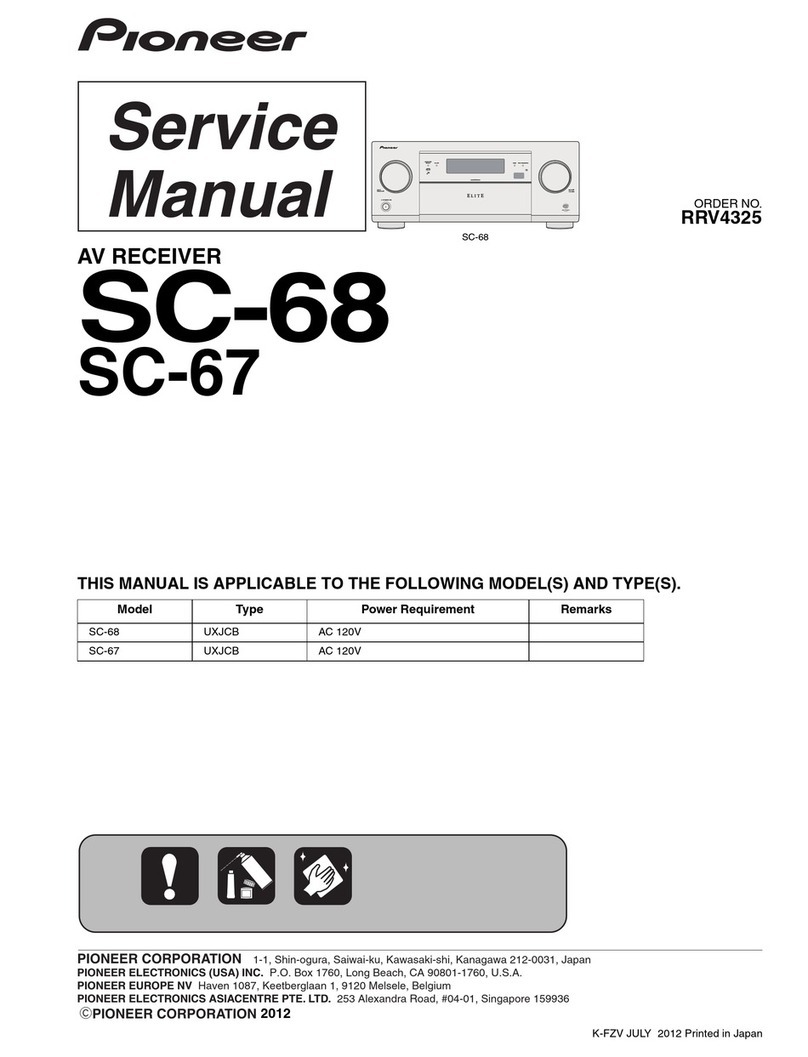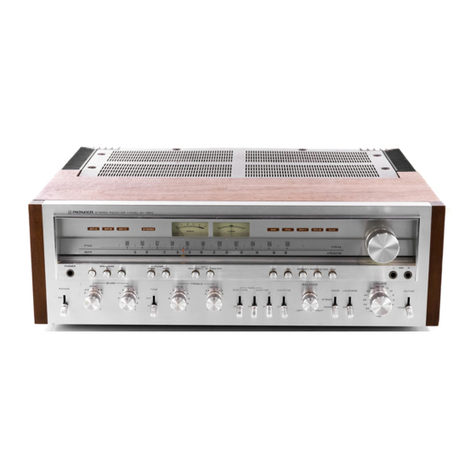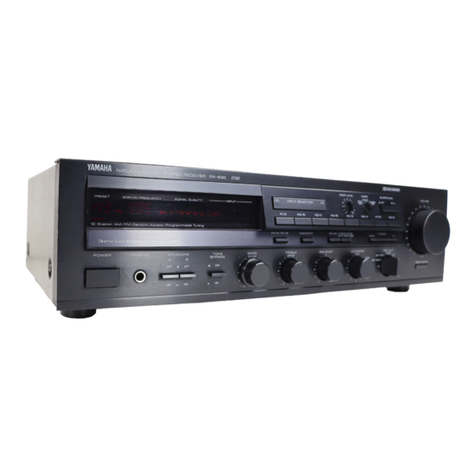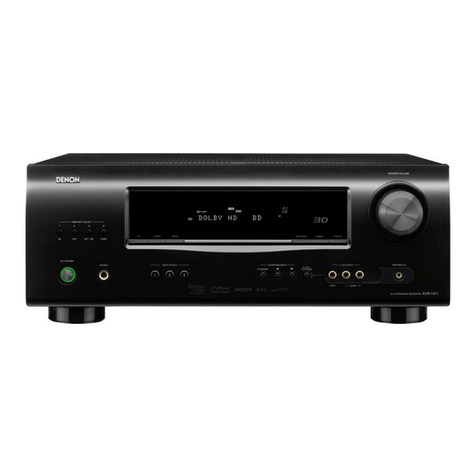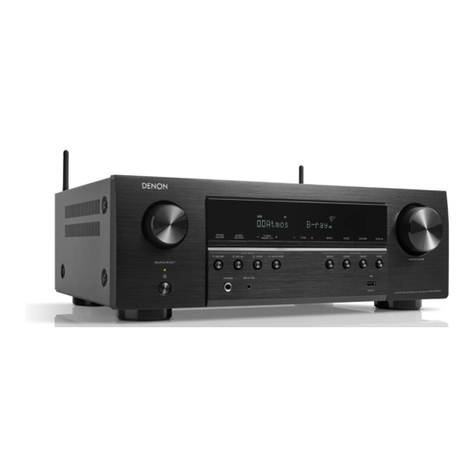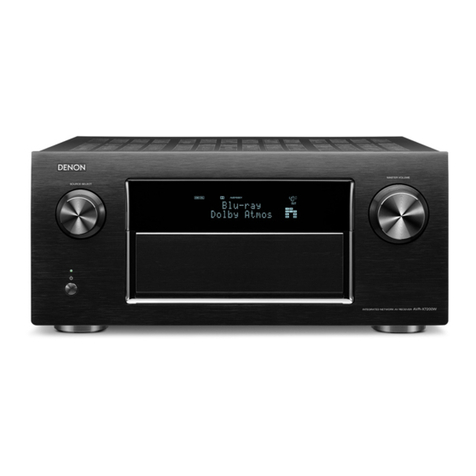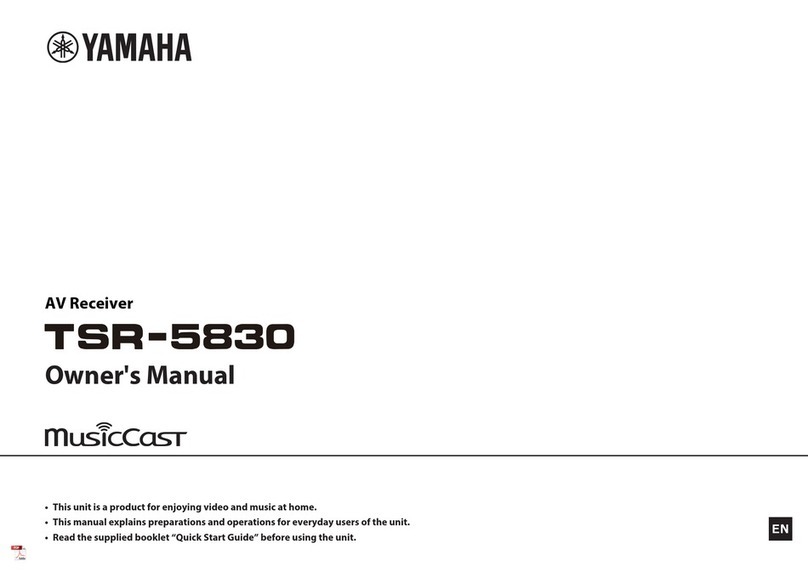
V.
DESCRIPTION
OF
THE
CIRCUIT
OPERATION
5-1
AMPLIFIER PERFORMANCE
5-1-
1 General De
sc
ription
(1)
Functions
a) Input Selector Control
This microcomputers
is
capable
of
controlling
analog switch TC9I64N that serves
as
the
input selector. Three input systems that include
PHONO.
CD.
and TUNER. and two monitoring
systems that include TAPE I and TAPE 2 may
be
controlled.
b) Direct
Access
Volume Control
Reads voltages detected out
of
the sound-volume
touch control through
an
A/D convener, and sets
the electronic potentiometer
in
accordance with
the read dat
a.
In
this process, any designated
setting
will
be
reached from the earlier potentio-
meter position
by
fading
in
or out.
c) Balance Control
By
setting various
lev
el differences between
Leh
and
Reh
on
the main control, up to a maximum
of
30dB
L-R
level offsets may
be
created.
d) Tone
(BASS
/TREBLE)
Co
ntrol
Operates the tone control potentiometer
(TC9156P)
in
2dB steps up
to
a maximum
of
±I0dB. and thereby performs as
an
electronically
controlled tone circuit.
f)
Acoustic Pattern Storage
By
this function. stores
in
the microcomputer two
patterns
of
the tone control circuit settings, and
enables the instant loading
of
either
of
the stored
patterns.
g)
Volume
Co
ntrol Safety Function
With
the touch control operated direct access
sound
vo
lume system that enables the instant
setting
of
any prefer
red
sound volume
level
, the
danger exists that the inadvertent touch
of
a
higher position
of
the control will cause a sudden
emission
of
unexpectedly high sounds from speak-
ers. A time lag measure
in
the form
of
fade-in's
has been provided
to
enable coping with the
above danger, but
as
an added and positive precau-
tion, this safety function
has
been added on that
suppresses
all
sounds louder than a
level
set in
advance.
h) TUNER Direct Function
This function
will
set the input selector at TUNER
upon receiving data from the microcomputer
(A
I007T) for the tuner that
is
outp
ut
as
soon
as
the tuner
has
been operated.
5-1
-2 Key
Input
and Dynamic
FL
Display
PIN
NO
CD
®
@
0
®
©
Strobes
Key
inputs and
FL
displays are both handled dynam-
ically. and their
bas
ic clock signals generated
by
the
ITM
R interrupt (1.024 Hz) for the output
of
strobe
signal
s.
R40
R4
t
R4
2
R4
>
R5
o
R51
61f1U
<
-i..-
IIIA
)(
1
28
i,U<
:=:n _
__
n
7
______
_,n'--
--
-
Fig. 5-1
5-1-3 Acceptance
of
Key lnputs
SINGLE
PRESSING w :
__J
:
••
I
CONTINUOUS
DEPRESSIONS
I I
--
24r'!UU
_111111
1; L
I
...c--
.-.<
>oooE--
~
,OOIH
1
~0
1
:.0
1
~0
1
~0
1
)0
Fig
.
5-~
• Chatterings
will
be
absorbed for
24
msec.
• Continuous depressions
will
be
accepted first at 24
msec after the depression start, second at 500 msec
after the first, and then at every I
SO
msec thereafter.
•
All
multiple depressions shall be inhibited. Once a
multiple depression
is
made, no
key
inputs
will
be
accepted until after
all
of
the depressed keys
have
been released.
5-1-4 Key Processings
(1)
(PHONO]. (CD]
Sets the input selector (TC9I64N) for either
of
the
input modes keyed
in
, and makes due indications for
it. Nothing, however.
will
occur when the depressed
key mode has already been engaged.
When
either TAPE I
or
TAPE 2 has been keyed on,
the displays for a tape monitored input
will
be
flashed on and
off
for
IO
times at a I
/2
duty and
once every second.
to
alert the operator
of
the
ongoing tape monitoring. In addition, when serial
data
is
being transferred
to
the analog switch, the
----------------S
ERVICE MANUAL
AA-A35/l
8
•
•
•

